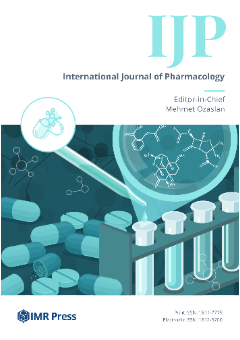International Journal of Pharmacology (IJP) is published by IMR Press from Volume 21 Issue 4 (2025). Previous articles were published by another publisher under the CC-BY licence, and they are hosted by IMR Press on imrpress.com as a courtesy and upon agreement.
Exploring Physiologically Active Compound Variations in Angelica dahurica and Elsholtzia splendens through Fermentation with Diverse Strains and Conditions
Background and Objective: In recent times, there has been a growing demand for the development and utilization of natural compounds, as opposed to synthetic substances. This study investigates the changes in the content of physiologically active compounds, namely apigenin, luteolin, nodakenin and scopoletin, in Angelica dahurica and Elsholtzia splendens through fermentation with various strains and conditions. Materials and Methods: Angelica dahurica and Elsholtzia splendens were extracted by using 70% ethanol and conducted for fermentation. Fermentation was carried out using strains of Lactobacillus casei, Bacillus subtilis, Saccharomyces cerevisiae and Aspergillus oryzae, employing both liquid and solid-state fermentation techniques with diverse temperature settings. High-Performance Liquid Chromatography (HPLC) was employed for the analysis of apigenin, luteolin, nodakenin and scopoletin content. Results: This research confirms significant variations in the levels of physiologically active compounds based on fermentation strains, states and temperatures. For Angelica dahurica, there is a notable trend of increased content of all compounds when Saccharomyces cerevisiae is utilized in liquid fermentation and a similar trend is observed primarily when either Saccharomyces cerevisiae or Aspergillus oryzae is used in solid-state fermentation. The result of Elsholtzia splendens is similar to Angelica dahurica. Conclusion: The outcomes of this study provide fundamental insights into fermentation conditions that enhance the levels of physiologically active compounds in Angelica dahurica and Elsholtzia splendens.

